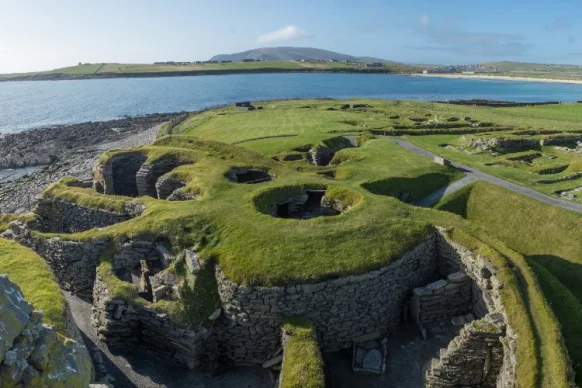
About Mottistone Manor and Gardens
Tucked away in a sheltered valley on the south-west of the Isle of Wight, England, Mottistone Manor is an Elizabethan manor house surrounded by beautiful gardens that were developed in the 1960s.
History of Mottistone Manor and Gardens
The gardens of Mottistone may be a 20th century creation, but the Mottistone estate dates back a little earlier, having been mentioned in the Domesday Book in 1086. The manor house in its current form, however, was largely built in the 15th and 16th centuries.
Disaster struck in the early 18th century, when a landslide effectively buried the back of the house in 1703. It remained in this state for over 200 years, even when purchased by a new owner in 1861, Charles Seely, a politician and later Member of Parliament for the Liberal Party. It wasn’t until Charles’s son, Jack, moved into the estate in 1926 and commissioned restoration work, that the landslide damage was repaired and the manor fully brought back to life.
The gardens were developed by Lady Vivien Nicholson in the 1960s (the site was previously used as farmland before the restoration in the 1920s) and emulate a Mediterranean style, reflecting Nicholson’s connection with Sicily (where she was brought up) and also taking advantage of the area’s warm climate.
Mottistone Manor and Gardens today
The manor is a National Trust property and is a popular tourist attraction on the island, primarily because of the extensive gardens. There are countless bright flowers lining the various herbaceous borders, and the gardens also contain a wildflower meadow, rose garden, olive grove, orchard, and much more. As well as the network of paths around the gardens themselves, there are numerous rural and coastal walks connected to – and nearby – the site.
Getting to Mottistone Manor and Gardens
You’ll need to get a ferry from the south coast of England across to the Isle of Wight. Several ferry services take a mix of foot passengers and vehicles from four ports: Portsmouth, Southampton and Lymington all operate car ferries to the island, and foot passenger ferries run from Southampton and Portsmouth, plus a hovercraft service from Southsea.
Once on the Isle of Wight, make your way towards the south-west coast (most ferries arrive on the north or north-east of the island). Driving takes around 30-40 minutes, though it’s possible to make the journey on several buses, which takes between 1-2 hours depending on which port you arrive at.
Featured In

6 Secret Historic Gardens in the United Kingdom
Here are our picks of some unknown English gardens that are a little off the beaten track.




















